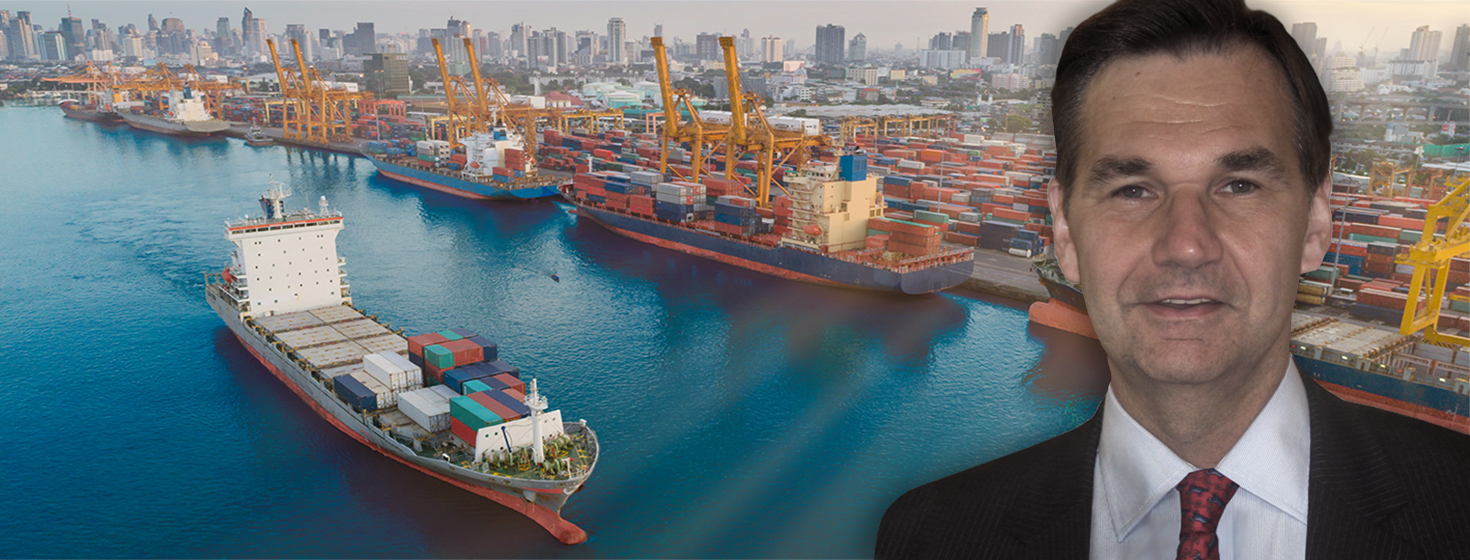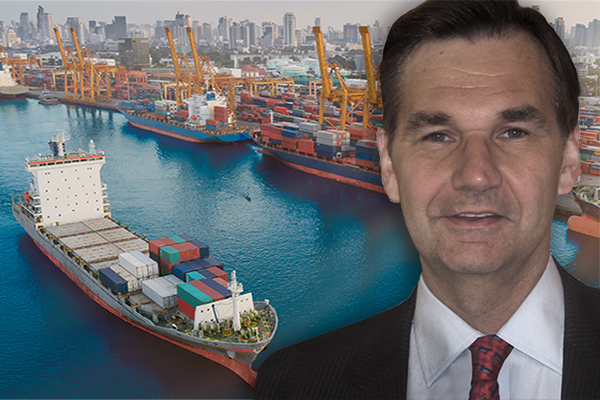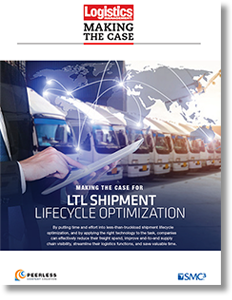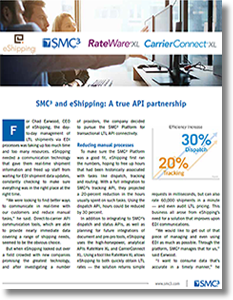JLL’s Dr. Walter Kemmsies Talks Economics, Supply Chain, NAFTA before Jump Start 2019 Conference

Dr. Walter Kemmsies, economist and chief strategist with JLL, widely viewed as one of the foremost experts on ports, rail, and infrastructure in the U.S., discusses globalization and the domestic logistics supply chain industry with SMC³.
Globalization and the Domestic Logistics Industry
JLL’s Dr. Walter Kemmsies (pictured above) is an expert in global trade and economic trends.
During the Jump Start 2019 supply chain conference, he is slated to talk with the audience about the evolution of NAFTA and the overall state of the international economy.
To prepare for his panel, SMC³ caught up with Kemmsies to discuss globalization and the domestic logistics industry.
Thinking about 2018, how would you characterize the economy, and how have supply chain stakeholders been impacted by the economic decisions coming out of Washington?
The economy is in the middle of a historically long cycle, owing to the severity of the 2007-2009 recession.
Since the recession officially ended in 2009, there has been a noticeable absence of a bounce-back period, where GDP grows at a high rate.
The economy has sustained a long period of expansion characterized by minimal investment by companies in plant, property, and equipment, which is needed to increase production capacity.
Companies have preferred to increase employment instead so that the unemployment rate has declined to levels not seen in several decades.
The public sector has also lagged in terms of infrastructure investment. Congestion has become a widespread problem in major population centers, particularly in most seaport cities.
Some railroads and many trucking companies lagged in terms of investment and employment, waiting until the need for capacity reached critical levels.
Supply chain managers now have to contend with significantly higher direct freight and labor costs, as well as indirect costs resulting from a decline in reliability.
Is this economic state sustainable? Will we be talking about the economy in a vastly different way after the first half of 2019?
The current economic state is not sustainable.
Cost-push inflation is increasing – wages, raw materials prices, transportation costs and industrial real estate lease rates (industrial real estate vacancy rates are below 2 percent in most major cities).
Consumer spending has been relatively strong, which has allowed companies to pass on some of the cost increases.
Given that unemployment of 3.7 percent is well below the long-term sustainable level of about 5 percent, it is likely that wages will start rising at a faster rate in 2019.
Unless companies start investing in physical capital to increase production capacity, they will have to raise wages to attract the labor they need in order to meet demand.
However, if wages start increasing faster, then, consumer spending could strengthen and companies will raise prices to cover their rising costs.
Is there a major economic issue on the horizon that should concern members of the domestic supply chain?
U.S. exports have been declining due to trading partners retaliating.
Although exports are a small part of the economy, there are ripple effects that accumulate over time.
At a minimum, these ripple effects can eventually sandbag GDP growth, and in some industries that depend on exports, the impact would be magnified.
How do you view the administration’s tariff strategy?
Running a half-trillion-and-growing trade deficit will inevitably create another financial/economic crisis, and, therefore, has to be dealt with.
Previous administrations have tried to resolve this, but it’s not clear that resolution would have come soon enough.
Pushing fragile economies like China to the brink, however, exceeds my comfort level.
A more gradual approach with intermediary quantitative goals, including penalties for not reaching them, might be more productive.
What do you see as the major pros and cons of the tariff strategy?
A major pro is that the world market for U.S. exports opens up.
A major con is that if the tariff strategy is aggressive, other economies might go into recession and grow more slowly.
That would negatively impact the demand for U.S. exports.
What is your opinion on the necessity of NAFTA?
As we have seen, supply chains transcend political boundaries, resulting in what is referred to as globalization.
Overall, this has been beneficial for the world economy because it has increased the global middle class from less than a billion people 20 years ago to almost 4 billion in the next several years.
NAFTA 2.0, or USMCA, is necessary to ensure that globalization benefits all economies.
An important element of USMCA is the requirement that the wage disparity between U.S. and Mexico auto workers be reduced.
This was a feature of NAFTA 1.0 but not enforced.
What is the one significant economic story that’s not getting as much attention as it deserves?
China’s economy is more fragile than most analysts and commentators seem to realize.
Consumption is less than 50 percent of China’s GDP; in virtually every other economy on the planet, it is in the 65-percent to 75-percent range.
Therefore, China’s economic growth is overly dependent on exports, and economic policy takes on the characteristics of mercantilism.
History teaches us that mercantilist policies always fail in the long run. Other U.S. trading partners also engage in such policies, although more subtly, and are also running the risk of long-term problems.
This is why the U.S. has pushed other economies towards more market-oriented policies – the U.S. economic track record supports the merits of that effort.
To hear more from Dr. Walter Kemmsies and other industry experts, sign up today for the three-day supply chain conference Jump Start 2019. Register here by today, November 30, 2018, to take advantage of early-bird pricing.
Jump Start 2019 | Conference Details | The Definitive Supply Chain Intelligence Gathering
Related Article: Shippers Turn to Volume Less-than-Truckload Spot Pricing in Tight Capacity Market
Related Resources
Making the Case for LTL Shipment Lifecycle Optimization New!
As you face capacity issues and rising freight rates, download this Making the Case report to learn how to optimize your LTL operations and get more strategic with your carrier and provider partners. Download Now!
Why eShipping Selected the SMC³ Platform for Transactional LTL API Connectivity
In this SMC³ case study, Chad Earwood, CEO of eShipping, describes how they integrated the SMC³ platform for transactional LTL API connectivity, and by using the high-horsepower, analytical APIs RateWare XL and CarrierConnect XL they are able to obtain immediate LTL rates and even audit LTL pricing. Download Now!
Transportation APIs & the SMC³ Platform
These data sheets detail how the SMC³ Platform offers the only transportation APIs designed to go beyond simple connectivity to deliver service orchestration for logistics service providers, shippers, carriers, and technology providers. Download Now!
The Single Source for LTL Pricing & Transit Information
The SMC³ Platform empowers 3PLs and Shippers of any size to successfully navigate and optimize the LTL shipment arena, choose the level of computing power based on your specific needs and operating environment with a technology platform offering the best of all worlds. Download Now!
More Resources from SMC³
Article Topics
SMC3 News & Resources
SMC3 Mercury Gate Case Study - Improving Workflows and Enhancing Efficiency with LTL APIs SMC3: Is Technology a Competitive Advantage in the Modern Supply Chain Industry? Armada’s Prather examines the disconnect between the freight economy and the macro economy at SMC3 JumpStart 2024 SMC³’s Solution to the Logistics Industries Talent Problem 2024 Transportation Rate Outlook: More of the same? Refining LTL API Consumption for Optimal Efficiency and Enhanced Services Regulations Impacting Less-than-Truckload More SMC3Latest in Supply Chain
TIm Cook Says Apple Plans to Increase Investments in Vietnam Amazon Logistics’ Growth Shakes Up Shipping Industry in 2023 Spotlight Startup: Cart.com is Reimagining Logistics Walmart and Swisslog Expand Partnership with New Texas Facility Nissan Channels Tesla With Its Latest Manufacturing Process Taking Stock of Today’s Robotics Market and What the Future Holds U.S. Manufacturing Gains Momentum After Another Strong Month More Supply Chain



















